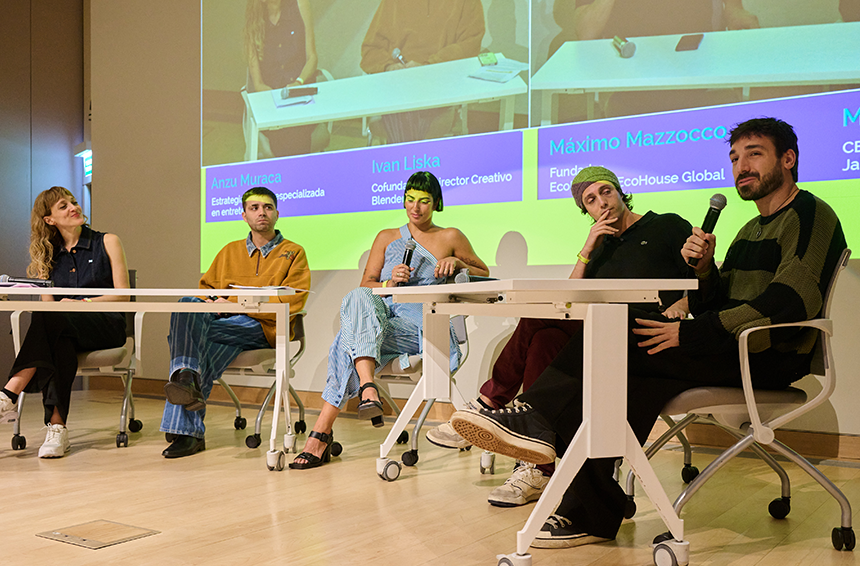World Breastfeeding Week is celebrated annually in the first week of August and this year the theme focuses on supporting effective practices to support breastfeeding in the workplace. In addition, measures that facilitate breastfeeding will be promoted, making a difference for working mothers and fathers. Specialists from the Otamendi Sanatorium explain the benefits of breastfeeding.
Within the framework of World Breastfeeding Week, the Otamendi Sanatorium highlights the benefits of breastfeeding for both mother and baby.World Breastfeeding Week is promoted by the World Health Organization (WHO), UNICEF, public entities and civil associations and this year the motto is “Breastfeeding and working: let’s make it possible!“. In this sense, it focuses on defending the essential rights promoted by breastfeeding, including maternity leave for a minimum of 18 weeks, and preferably more than 6 months, and a space in the workplace to breastfeed later.
The most common reason why people do not breastfeed or stop breastfeeding more than recommended by WHO or because of what they want is limitations encountered in workplaces. Families should not have to face the choice between breastfeeding and working. Breastfeeding support is needed no matter what workplace, type of work, or sector they are in.
“Breastfeeding babies is very important because it provides them with an ideal food with all the nutrients for all stages of life and helps them grow strong and healthy. In addition, it contributes to improving the health of populations for the future, “says Dr. Cecilia Bastón (MN 105.678), pediatrician Joint Hospitalization Coordinator of the Otamendi Sanatorium and member of the executive board of the breastfeeding committee of the Society of Pediatrics. In our country, the 2022 National Breastfeeding Survey of the Ministry of Health,[1] revealed that exclusive breastfeeding is maintained at 2 months at 53.5% and shows a similar number in the 4-month group (49.5%). However, this decreases at 6 months, where only 44.7%, the latter is recommended by the WHO.
These are urgent issues that need to be addressed in order to ensure breastfeeding for as long as they want. Many families do not have access to basic maternity benefits, and many face a lack of support when returning to the workforce after giving birth. “Government protection and protection from abusive business practices is critical from the health sector, employers and the community. The central objective is to empower families by achieving favorable environments to achieve a balance between work and breastfeeding, “reaffirms Dr. Baston. The country currently has a regulatory framework that seeks to protect, strengthen and accompany the comprehensive care of life and health (Law No. 27.611/2021), promote and raise awareness about breastfeeding (Law No. 26.873/2013) and protect the rights of parents and the newborn (Law No. 25.929/2004).
In addition, since 2004 the Ministry of Health has been working with the IHAMN (Mother and Child Friendly Hospital Initiative) in conjunction with WHO and UNICEF with the initiative to implement practices that support breastfeeding in breastfeeding-friendly hospitals and health centers, lactation centers and human milk banks from the emotional and practical side to achieve the success of breastfeeding by promoting actions to improve breastfeeding conditions work.
“As a health institution, we understand that it is crucial to take action to change this situation and ensure that all people have the opportunity to breastfeed without hindrance,” she explained. In addition, the Otamendi Sanatorium accompanies breastfeeding in its different stages, either from the prenatal stage, the moment of birth, or during hospitalization that can be joint or in the Neonatal Intensive Care Unit. Some of the factors that influence breastfeeding and provide an opportunity for improvement are:
- Prenatal Talks
- Type of delivery as it is decisive for the continuity of breastfeeding in the long term
- The first breast during the first hour of the baby’s life.
- Birth weight, infants with less than 2500 g is a challenge for the health system because of its vulnerability.
- Separation time since breastfeeding and exclusive breastfeeding in children who spend less than 4 hours separated from breastfeeding families has a higher prevalence.
- The age of the pregnant person. Those over 36 years of age have a lower prevalence of exclusive breastfeeding and breastfeeding.
- Special situations. Even in situations where both the mother and the newborn are with some clinical condition of care, it requires our commitment and accompaniment in a facilitating role to achieve both the initiation and maintenance of breastfeeding.
- Lactation Office. From the Otamendi Sanatorium we promote the creation of the lactation clinic making visible the needs of each family to provide accompaniment and advice from the prenatal stage, post-discharge follow-up, to weaning, trying to achieve a chain of support and then reconcile breastfeeding with the return to work.
- Friend Space for the return to work. Every woman should have hygienic breastfeeding rooms and specialized help in her work.
“Breastfeeding is a cultural fact that the whole society needs to improve all its indicators. We are facing a paradigm shift towards breastfeeding, since it is not thought of as exclusively maternal, but as from multiple family configurations“, concludes Dr. Cecilia Baston. Promoting and sustaining breastfeeding when returning to work seeks to inform people who breastfeed about their rights, consolidate support in the workplace with the creation of Friendly or Lactary Spaces and involve the family group and society in contributing to the maintenance of breastfeeding and promoting actions to improve working conditions and the necessary support for breastfeeding.




